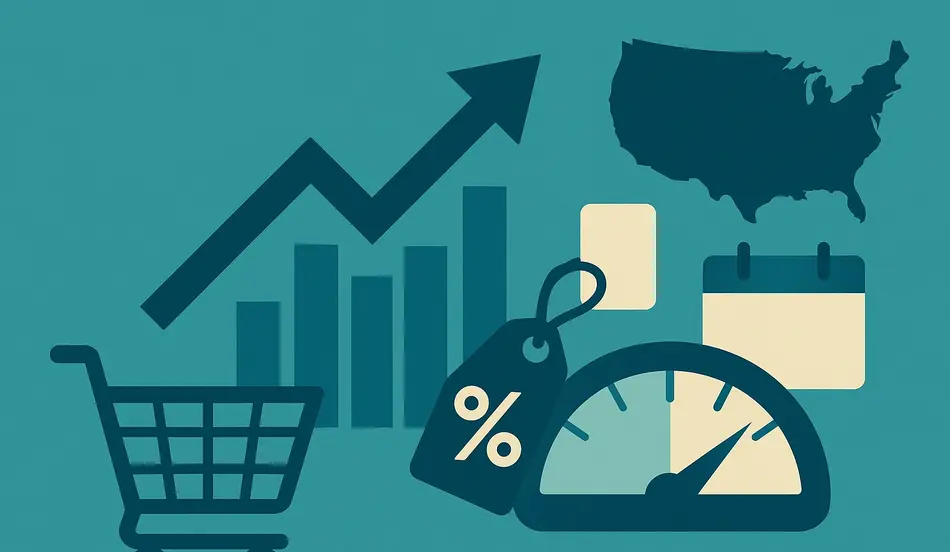U.S. consumer prices rose modestly in July, with the latest Consumer Price Index (CPI) data showing a slight pickup in core inflation — a key measure closely watched by the Federal Reserve.
According to the Bureau of Labor Statistics report released Tuesday, headline CPI increased 0.2% month-over-month, exactly matching economists’ expectations. On a year-over-year basis, prices climbed 2.7%, marking a steady pace from June.
Core CPI, which strips out volatile food and energy categories, rose 0.3% in July. That figure was higher than anticipated, pushing the annual core rate to 3.1%, suggesting underlying inflationary pressures remain persistent.
Category Breakdown
Several price categories posted notable moves in July:
- Airline fares surged 4% after three consecutive monthly declines, driving much of the core CPI increase.
- Medical care services jumped 0.8%, while used car prices rose 0.5%.
- Rent of primary residence and owners’ equivalent rent each climbed 0.3% for the third straight month.
- Apparel prices edged up 0.1%, while new vehicle prices were flat, suggesting automakers may be absorbing tariff costs.
On the downside, gasoline prices fell 2.2%, holding down the overall CPI figure despite seasonal adjustments. Food prices were unchanged on the month, offering some relief to household budgets.
Secure the Talent You Need Before Costs Rise
Post your job on WhatJobs now and reach top candidates—lock in your hiring before wage inflation catches up.
Post a Job Now →Tariffs and Import Costs
Analysts noted that the modest increases in used car and apparel prices may partly reflect the impact of tariffs on imported goods. Electronics data was not immediately available, but economists expect some upward pressure in coming months as demand for imported consumer products picks up.
Implications for the Federal Reserve
The Federal Reserve has been looking for sustained evidence that inflation is moving back toward its 2% target before cutting interest rates. With core inflation still above 3% and categories like housing and services remaining sticky, most analysts expect the Fed to hold rates at 5.25%–5.50% at its September policy meeting.
“Gasoline helped keep the headline number in check, but the rise in core services — especially airline fares and medical costs — shows the inflation fight isn’t over,” said one market strategist.
Market Reaction
U.S. Treasury yields rose slightly after the release, reflecting expectations that rate cuts could be pushed further into late 2025. Equity markets were mixed, with consumer discretionary stocks showing mild gains due to stable energy prices.
FAQ — July 2025 U.S. CPI Report
1. What was the U.S. inflation rate in July 2025?
Headline CPI rose 0.2% month-over-month and 2.7% year-over-year. Core CPI, which excludes food and energy, increased 0.3% on the month and 3.1% annually.
2. Which categories saw the largest price increases?
The biggest monthly gains came from airline fares (+4%), medical care services (+0.8%), and used cars (+0.5%). Rent and owners’ equivalent rent also rose 0.3% for the third straight month.
3. How did energy and food prices affect the report?
Gasoline prices fell 2.2%, helping to keep headline inflation from rising faster. Food prices were flat in July, offering some relief to consumers.
4. What does this mean for Federal Reserve policy?
With core inflation still above 3%, the Fed is likely to maintain its current interest rate range (5.25%–5.50%) at its September meeting. Rate cuts may be delayed until inflation moves closer to the 2% target.




